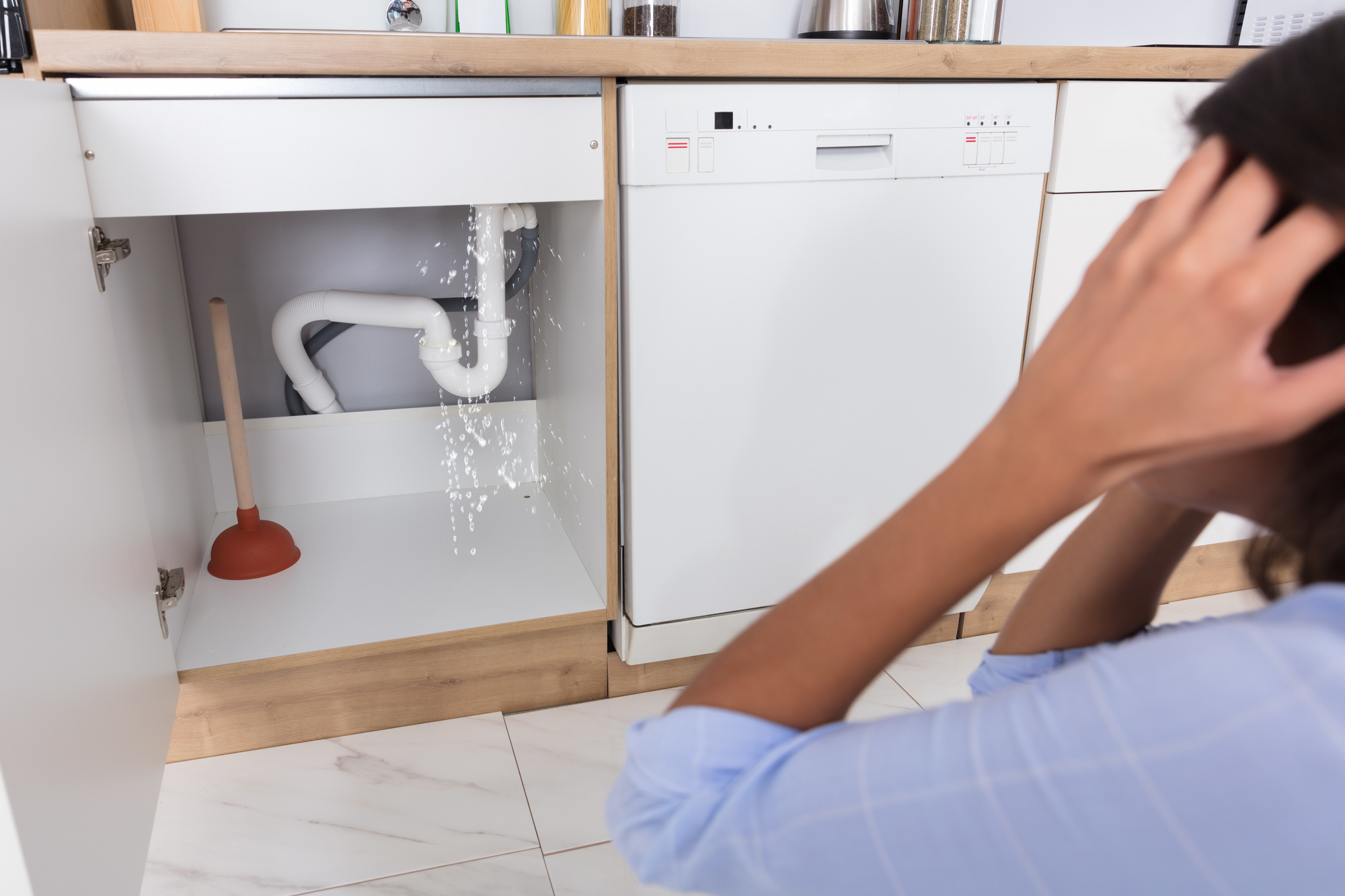
Troubled Woman Looking At Leaking Sink Pipe In Kitchen
The average American household can waste around 180 gallons of water per week from leaks. Without fixing these leaks, they can add up to around 9,400 gallons per year.
A leaking water pipe is easy to miss, especially if you don’t know what to look out for. But you’re still paying for the water that’s being leaked, even if you’re not using it! That, coupled with the threat to the environment, means you should always look out for and fix leaks.
The earlier you identify leaks, the better. Keep reading to learn everything you need to know about finding and fixing household leaks.
Track Your Water Bill
The first indicator of a broken water pipe is going to be in your water bill. If your household water usage stays the same, but the bill is increasing, it means you’ve likely got a leak somewhere.
To catch leaks as early as possible, it’s best to have a sense of how much water your household normally uses. Then, if your bill is suddenly much higher than normal and you can’t explain why then you know you’ve got to find the leaking water pipe.
Check the Water Meter
Your water meter is a live reflection of your water usage. To do a check for leaks, make sure all your faucets are closed and turn off any appliances that use water. This includes dishwashers, washing machines, and sprinkler systems.
Take note of the number your meter shows once everything is off. If the number continues to increase even though no water is running, it means you’ve got a big or fast-moving leak.
If the number stays the same, note it down and leave the meter for around two hours. Make sure you don’t use any water during that time. Then when you come back to the meter, if the number has gone up again, it means you’ve got a small or slow-moving leak.
Both of these types of leaks cause water damage, depending on how long it takes you to identify them. This is why it’s important to check for leaks and spot them sooner rather than later.
Locating the Leak
If you suspect you’ve got a leak, there are a few common places to look for it. These are usually the places with lots of water, so you don’t notice a little extra, or they’re secluded places you don’t see very much.
Toilet Systems
Toilet cisterns are a common leak because they’re difficult to notice. Toilets have a lot of water flowing through them, and you’re not really looking into them too closely! Luckily, there’s an easy test to identify a leak here.
Place a few drops of food coloring into the toilet cistern. If after a few minutes the food coloring shows up in the toilet bowl, even though you didn’t flush, it means you have a leak.
Hot Water Cylinder
The hot water cylinder is a common source of leaks because there are a few ways it can happen. There could be a leaking pipe, the expansion relief valve is dripping because it’s loose, or the gully trap is overflowing.
And since the hot water cylinder is usually kept out of sight, it’s easy to miss these leaks. If the area surrounding the hot water cylinder feels damp, smells funny, or has any mold or rot, it means there’s a leak.
Appliances
Most appliances with high water usage end up in their own nooks with their plumbing system tucked behind them. This is a great idea for saving space but makes it hard to notice leaks.
It’s a good idea to check your washing machine and dishwasher for any sign of a broken water pipe.
Sprinkler System
Irrigation or sprinkler system leaks are hard to spot because they’re dried up or absorbed by the time you would notice them.
Look out for a leak in your garden by noting any patches of grass that seem greener than the rest. This indicates that the area is getting better access to water than the rest of the garden, and might be due to a leak.
Mold or Rot
Mold and rot result from excess water in your home. Mold thrives in warm, dark, damp conditions, while rot results from materials being waterlogged.
If you notice mold or rot around your home, it means there is a good chance the area is exposed to a leak.
Fixing the Leak
Once you’ve located the leak, you’ve got to fix it as soon as possible. Some leaks are pretty easy to fix up yourself. This will be in cases where the pipes are exposed and need to be tightened, patched, or replaced.
But, if the broken water pipe is difficult to access, it might be more difficult to repair the leaking water pipe yourself. This is when hiring a professional might be best.
Professionals have better equipment and a lot more experience, so they can find your leaks and fix them a lot faster than you’d be able to.
Once the leak has been fixed, keep an eye on it for a few days. This way you’ll see the signs if it wasn’t repaired completely, or if there might be another leak you haven’t identified yet.
Finding and Fixing That Leaking Water Pipe
A leaking water pipe can cause lots of damage to your life, from water damage to your home to expensive bills you’ve got to pay.
Make sure you’re on the lookout for leaks so you can fix them before they cause too much damage.
If you enjoyed this article, please check out our blog for more content!
Leave a Reply